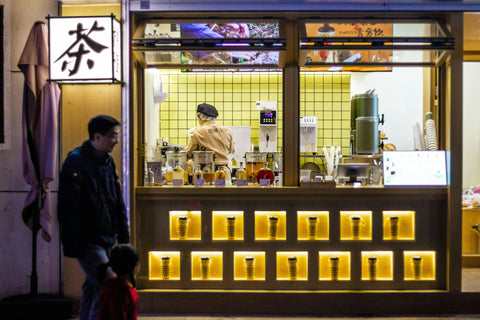In today’s competitive Bubble Tea industry, efficiency and speed can make all the difference. Beyond ingredients, equipment, and packaging, digital inventory management and data analytics are powerful tools for B2B operators looking to cut costs, improve supply chain performance, and deliver a consistently great customer experience.
Why Digital Inventory Matters for Bubble Tea Businesses
-
Reduce Waste: Ingredients like tapioca pearls, syrups, and fruit purées can easily expire if overstocked. A digital system helps track shelf life and usage rates, ensuring stock levels match real demand.
-
Consistency in Supply: Digital tracking helps predict demand during peak periods (holidays, seasonal promotions), ensuring you never run out of essential teas, powders, or toppings.
-
Streamline Ordering: Automated reordering reminders prevent stockouts and last-minute urgent purchases that cut into profits.
The Role of Data Analytics in Your Supply Chain
-
Data-Driven Purchasing: Analyse sales data to identify which flavours, toppings, and drink sizes are most popular. Adjust order volumes accordingly for smarter procurement.
-
Seasonal Trend Forecasting: Past sales data reveals seasonal shifts—like the surge in fruit tea sales during summer—allowing you to prepare stock ahead of time.
-
Cost Optimisation: Track ingredient costs, shipping fees, and storage expenses. Use this insight to refine your pricing strategy and protect profit margins.
How to Implement Digital Inventory & Analytics
-
Choose the Right System
Smaller shops can start with simple POS + spreadsheets, while larger chains benefit from advanced systems with barcode scanning, batch tracking, and expiry date monitoring. -
Collect & Integrate Data
Capture all sales data from POS systems, supplier costs, shipping times, and daily consumption rates. -
Set Key Performance Indicators (KPIs)
Examples include stock turnover rates, frequency of shortages, expiry-related waste, and ingredient usage cycles. -
Collaborate with Suppliers
Share key insights with suppliers like Bubble Tea Supply Australia so they can anticipate your demand, reducing lead times and ensuring stable deliveries. -
Continuous Optimisation
Use data from seasonal campaigns, holidays, and weather-driven demand spikes to improve future forecasting and purchasing decisions.
Support from Bubble Tea Supply Australia
At Bubble Tea Supply Australia, we provide wholesale ingredients and supplies including premium teas, powders, syrups, fruit concentrates, packaging, and accessories.
-
We support B2B businesses with detailed product information (shelf life, storage conditions, shipping timelines) to help you calculate costs and plan inventory.
-
By categorising your purchases (tea, powders, toppings, packaging), you can analyse which product groups drive the most profit and which require tighter cost control.
Conclusion
Digital inventory management and data analytics aren’t just buzzwords—they’re practical tools that help Bubble Tea businesses reduce waste, lower costs, and improve efficiency. B2B operators who embrace these strategies gain a competitive edge and better long-term profitability. Partnering with a reliable supplier like Bubble Tea Supply Australia ensures that your supply chain runs smoothly, empowering your business to focus on what really matters: serving customers.







